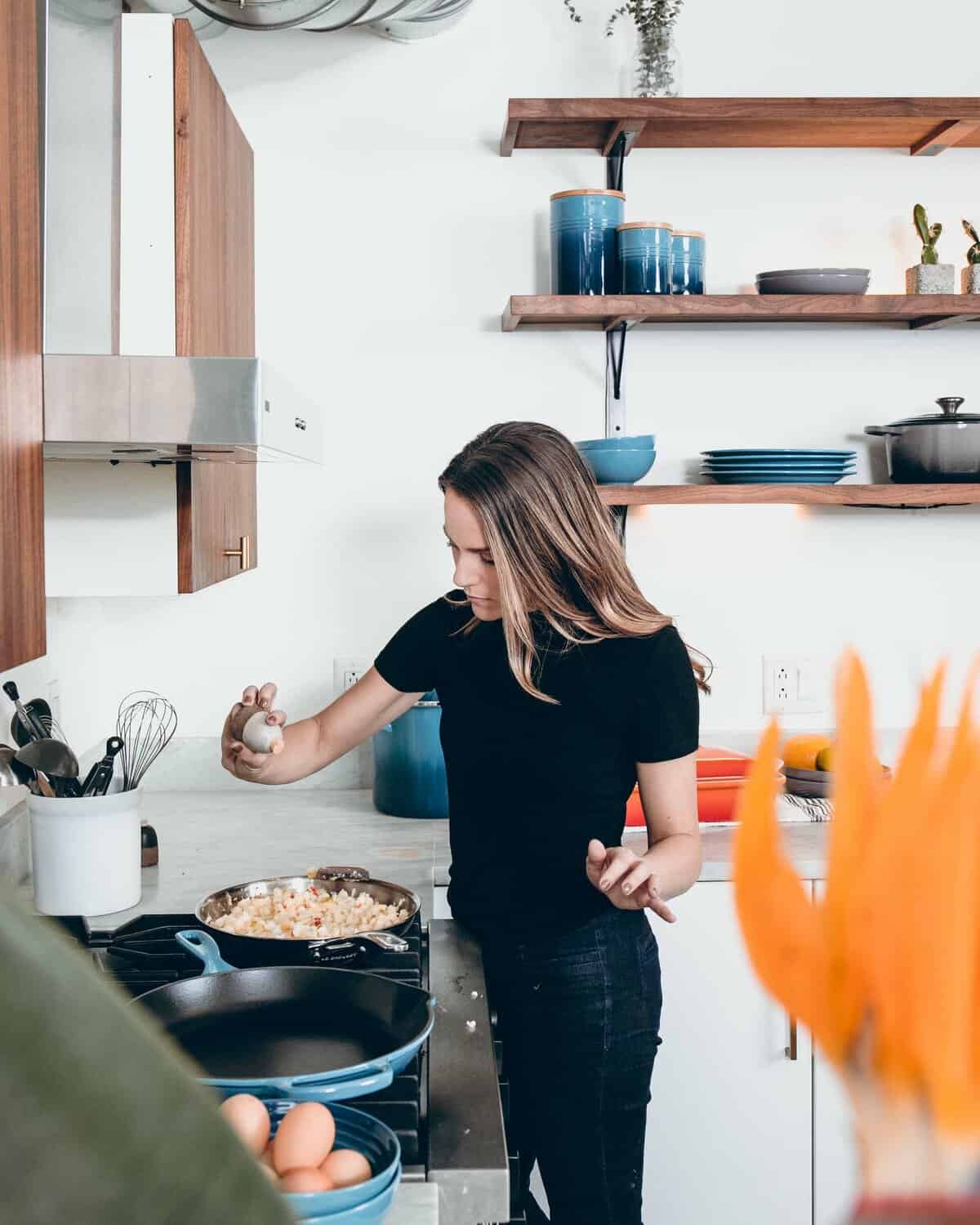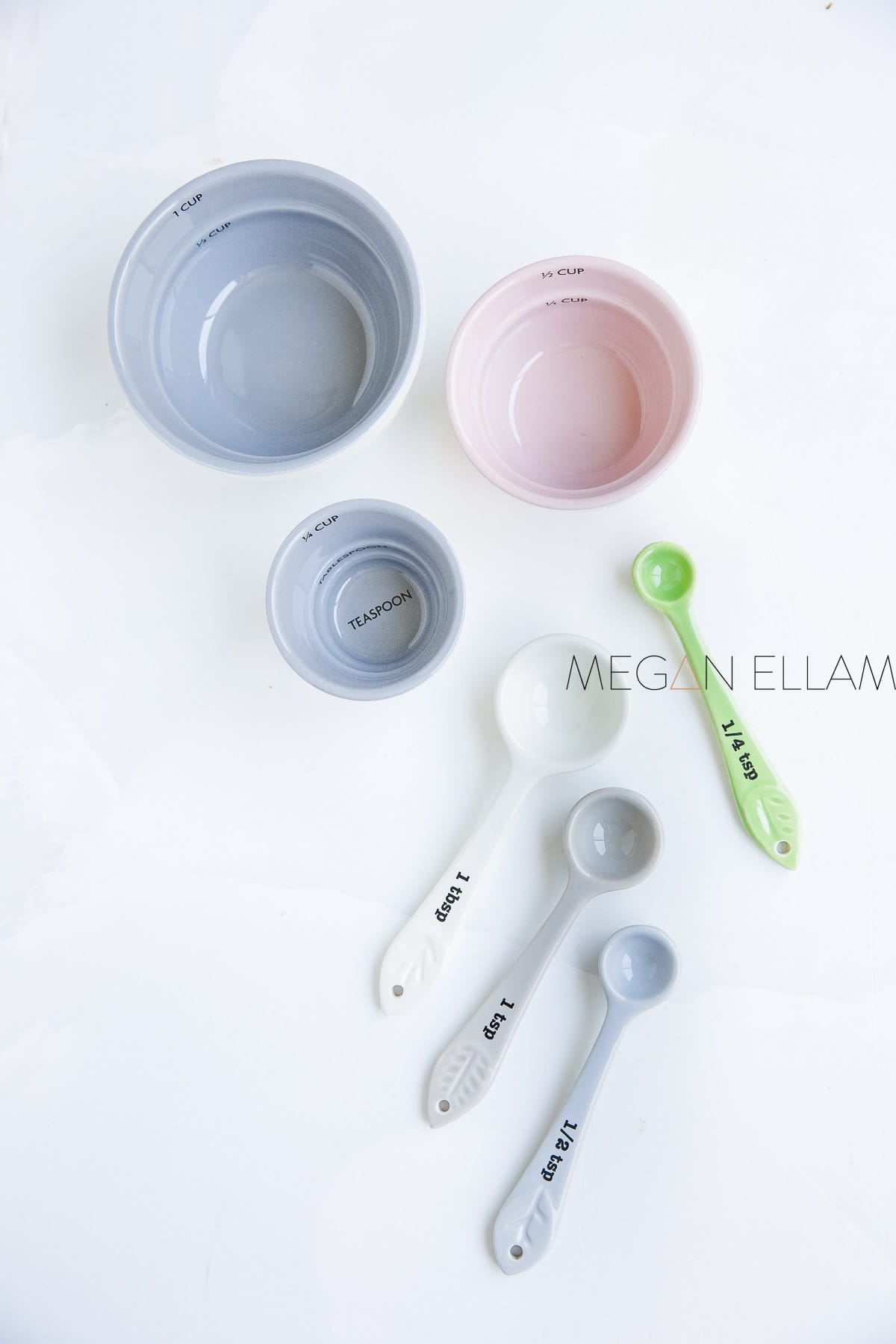
Cooking and baking can be delightful, creative endeavours. However, they often require precision and accuracy when it comes to measuring ingredients. One common question that arises often is, “How many cups are in an ounce?” Understanding this conversion is essential for ensuring consistent and delicious results in all your recipes.
Calculate Ounces to Cups
Understanding the Basics:
We often use ounces (oz) to measure liquid ounces and dry ounces ingredients, while cups are primarily used for measuring liquids. It’s crucial to differentiate between fluid ounces (volume) and ounces (weight). The conversion between the two can vary depending on the substance being measured. In terms of measurement, 1 oz = 28.35 g (grams).
In general, liquid ounce measurements are used to calculate wet ingredients, while dry ounce measurements are typically used for non-liquid items such as baking ingredients.
Liquid Cup Measurements:
When it comes to liquid measuring cups, the conversion is relatively straightforward. One fl oz is equivalent to 1/8th of one cup. Therefore, if a recipe calls for 8 fl oz of a liquid ingredient, you will need 1 cup (8/8) to meet that measurement.
The liquid measurements remain consistent across both the imperial and metric systems. Here’s a breakdown for quick reference:
- 1 fluid ounce (fl oz) = 1/8 cup
- 2 fluid ounces (fl oz) = 1/4 cup
- 4 fluid ounces (fl oz) = 1/2 cup
- 8 fluid ounces (fl oz) = 1 cup
- 16 fluid ounces (fl oz) = 2 cups
- 32 fluid ounces (fl oz) = 4 cups (1 quart)
Dry Cup Measurements:
Dry ingredients are measured by weight, so the conversion from oz to cup can be a bit more complex. When you measure dry ingredients the weight varies depending on the density of the ingredient. For example, 1 cup of almond meal will pack more than one cup of coconut flakes.
Generally, dry measuring cups can weigh between 3 to 5 oz, depending on the density. To add to the complexity, the conversion between ounces and cups differs between the imperial and metric systems.
In the imperial system, where the United States customary units are used, the general rule of thumb is as follows:
- 1 cup of a dry ingredient ≈ 4.5 ounces (weight may vary depending on the ingredient’s density). e.g. 1 cup flour will compact more than 1 cup of keto granola.
In the metric system, where grams (g) are commonly used, the conversion is as follows:
- 1 cup of a dry ingredient ≈ 120 grams (weight may vary depending on the ingredient’s density)
Use our calculator to learn how many tablespoons in a cup if smaller quantities are needed.
It’s important to note that these are approximate conversions, and the specific weight of a cup of a dry ingredient may vary. For accurate measurements, it’s recommended to use a kitchen scale. If converting tablespoons to ounces and ml it is important to also know what type of tablespoon you are using (metric, Australian, or US Customary).

FAQs
A standard cup is equal to 8 fluid ounces (fl oz). However, for dry ingredients, a cup is often considered 8 ounces in weight.
No, fluid ounces (fl oz) and ounces (oz) are different units of measurement. Fluid ounces are used for measuring liquid volume, while ounces are used for measuring weight.
In cooking and baking, a dry cup usually refers to a cup of dry ingredients, such as flour or sugar. Although a cup is commonly 8 fl oz, a dry cup is often considered to be 8 ounces in weight.
To convert ounces to cups, you need to know the type of ingredients being referred to. For fl oz, divide the number by 8 to get the equivalent cups. For ounces of weight, such as in dry ingredients, it’s important to consult a conversion chart as the weight of ingredients can vary.
A cup of water is equivalent to 8 fl oz because water has the same density as the standard unit of measurement.
Conclusion:
So, the next time you’re in the kitchen, confidently measure your ingredients, knowing you have mastered the art of converting between cups and ounces. As I mentioned above a good set of kitchen scales that does all the conversions for you is a great investment. Personally, I always weigh ingredients so I get exacting results in all of my recipes. A set of scales is super cheap and a great addition to any kitchen.
Whether you’re working with the imperial or metric system, understanding these conversions will help you achieve culinary success. Happy cooking!
2 responses to “How Many Ounces in a Cup”
-
Thanks so much Megan. I now know where to come when converting my old cookbooks for how many ounces in a cup or fl oz. It is always hard to know what is accurate on the internet. I trust your recipes so I will use this in future. Thanx
-
Thank you so much. I need this calculator in my life to get through conversions. Why doesnt everyone have them or even better yet, why dont all recipes show the conversions of how many ounces in cup, etc.

Leave a Reply